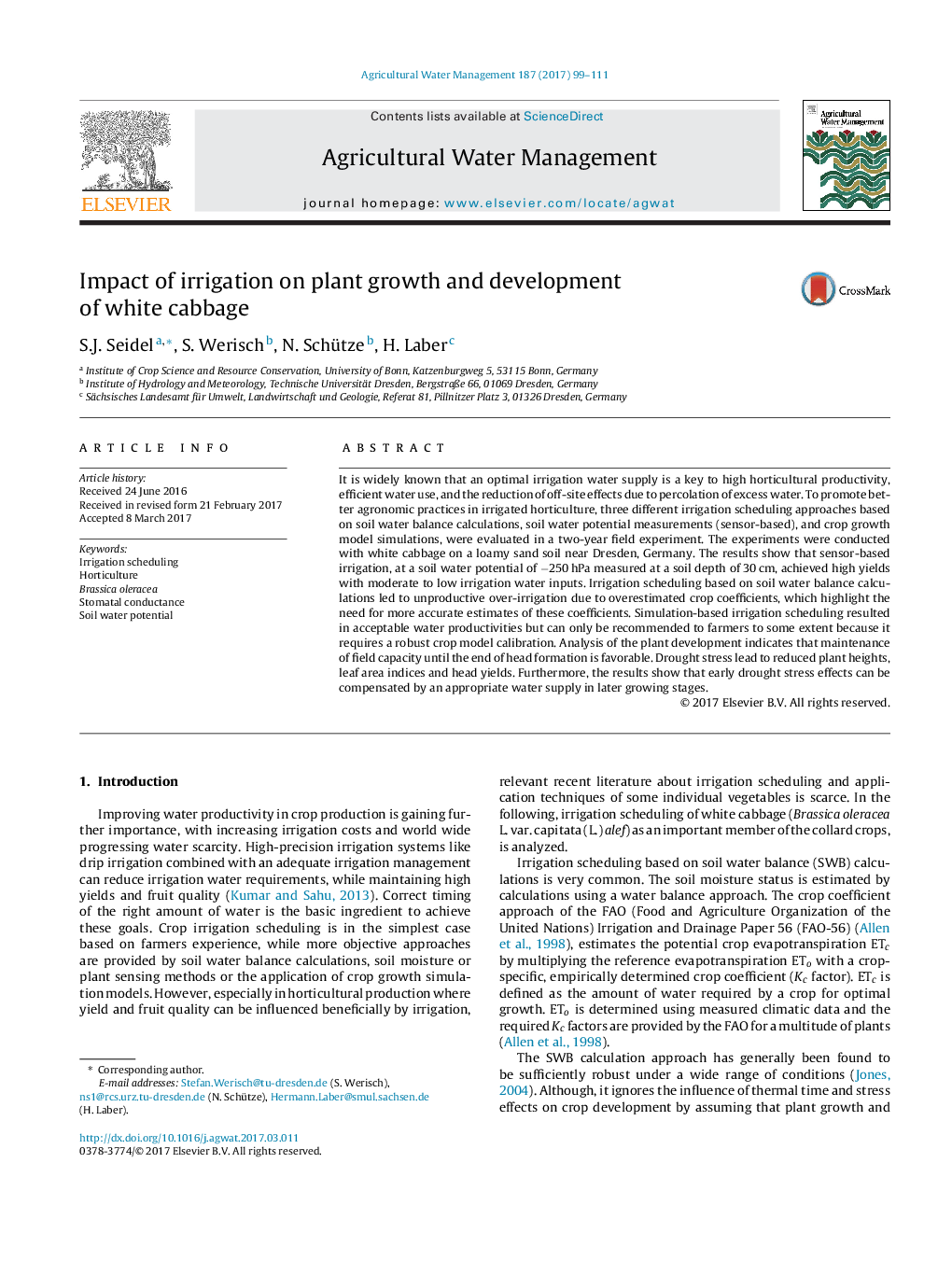| Article ID | Journal | Published Year | Pages | File Type |
|---|---|---|---|---|
| 5758496 | Agricultural Water Management | 2017 | 13 Pages |
Abstract
It is widely known that an optimal irrigation water supply is a key to high horticultural productivity, efficient water use, and the reduction of off-site effects due to percolation of excess water. To promote better agronomic practices in irrigated horticulture, three different irrigation scheduling approaches based on soil water balance calculations, soil water potential measurements (sensor-based), and crop growth model simulations, were evaluated in a two-year field experiment. The experiments were conducted with white cabbage on a loamy sand soil near Dresden, Germany. The results show that sensor-based irrigation, at a soil water potential of â250Â hPa measured at a soil depth of 30Â cm, achieved high yields with moderate to low irrigation water inputs. Irrigation scheduling based on soil water balance calculations led to unproductive over-irrigation due to overestimated crop coefficients, which highlight the need for more accurate estimates of these coefficients. Simulation-based irrigation scheduling resulted in acceptable water productivities but can only be recommended to farmers to some extent because it requires a robust crop model calibration. Analysis of the plant development indicates that maintenance of field capacity until the end of head formation is favorable. Drought stress lead to reduced plant heights, leaf area indices and head yields. Furthermore, the results show that early drought stress effects can be compensated by an appropriate water supply in later growing stages.
Related Topics
Life Sciences
Agricultural and Biological Sciences
Agronomy and Crop Science
Authors
S.J. Seidel, S. Werisch, N. Schütze, H. Laber,
